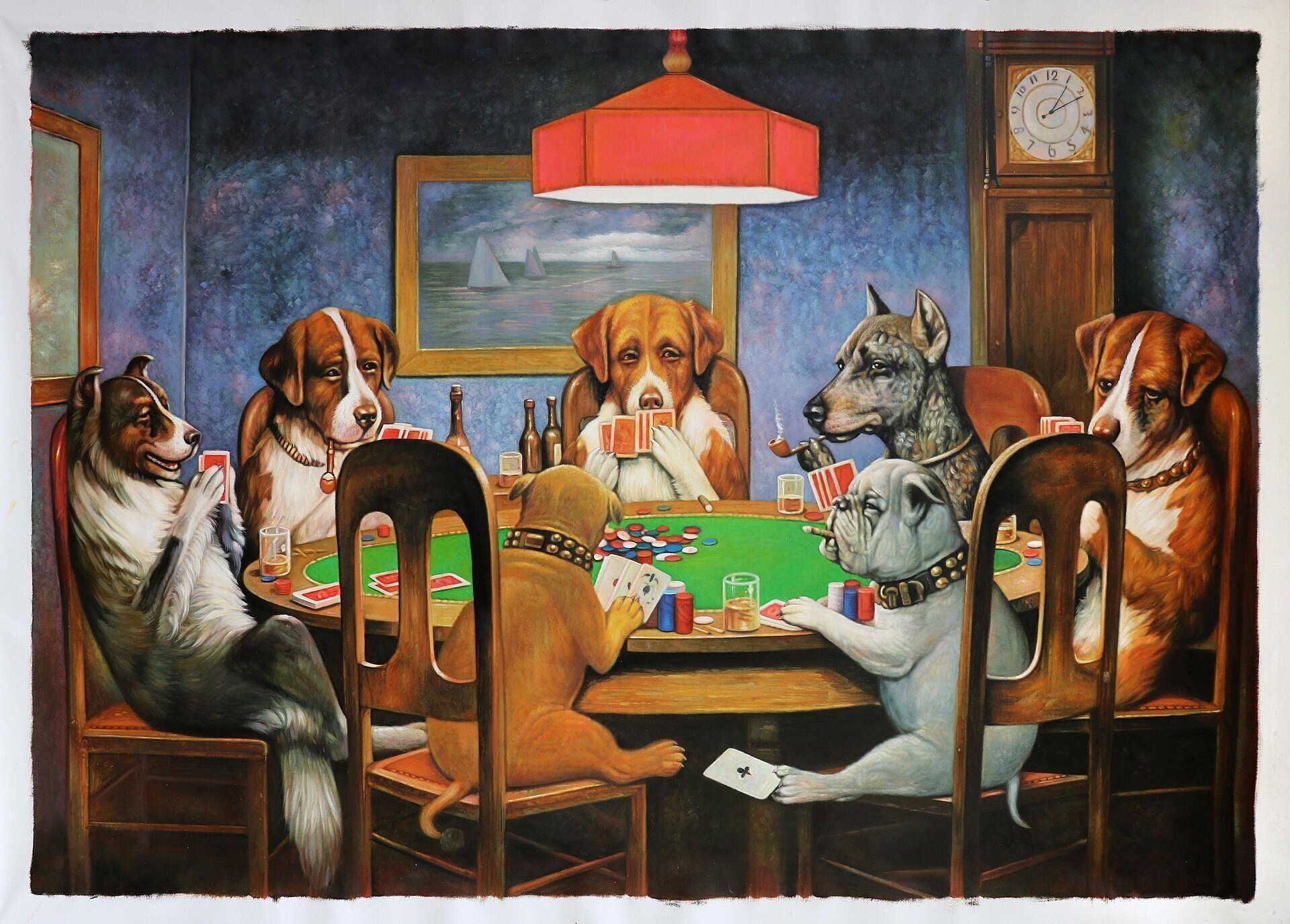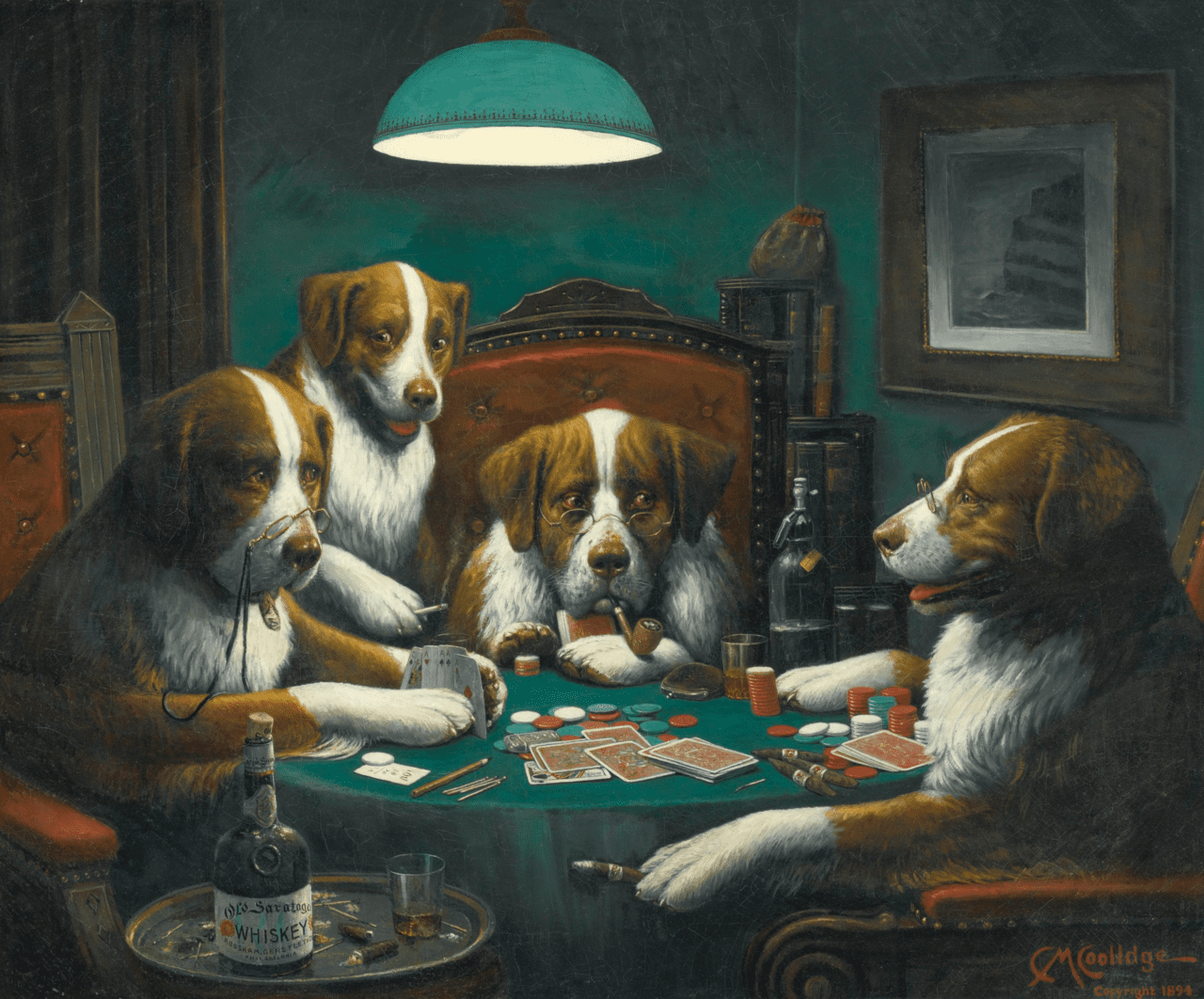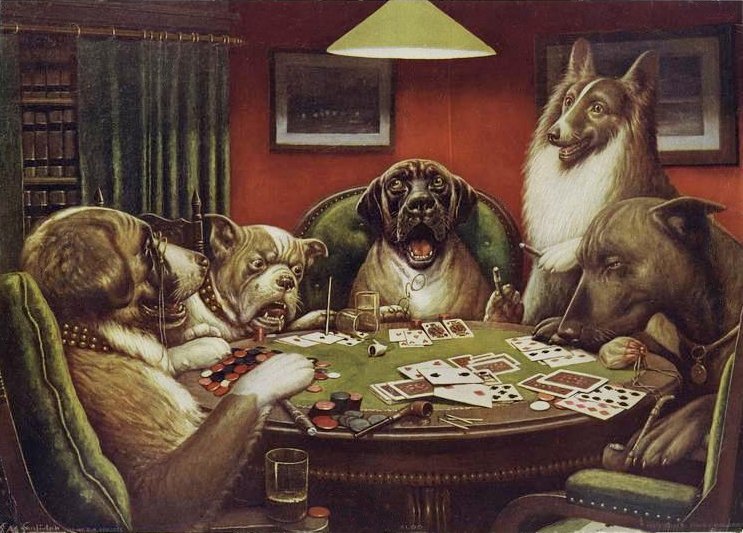The smoky, whiskey-scented world of poker has long fascinated more than just gamblers. It has also inspired artists to capture its tension, camaraderie, and calculated risk-taking. But while many have tried, only a few artworks have reached truly iconic status.
One of them, without a doubt, is Dogs Playing Poker – a series that became a pop culture phenomenon, a favorite among poker fans, and for some, the very definition of kitsch.
Who Was Cassius Marcellus Coolidge?
Behind the series was Cassius Marcellus Coolidge, who began his artistic career in the second half of the 19th century and created his most famous paintings in the early 20th. Though he had no formal art education, Coolidge had a unique sense of humor and a surreal, whimsical eye for everyday situations.
Before finding success, he worked in a bank, a pharmacy, and even painted comic carnival cutouts. Eventually, he turned to illustration, blending anthropomorphic animals with scenes pulled straight from human life – including, most famously, the poker table.
Dogs Playing Poker – The Full Series Behind the Famous Painting
Many people think Dogs Playing Poker refers to a single painting, but it’s actually a series of 18 works. The first, titled Poker Game, was painted in 1894. But Coolidge’s real breakthrough came in 1903, when the Brown & Bigelow advertising company commissioned him to create 16 paintings to promote cigars via calendar illustrations.
The series portrays dogs in all kinds of situations – playing poker, going on road trips, celebrating holidays – but nine of the paintings focus specifically on poker games. These became the most iconic, cementing the series’ status as a cultural legend.
A Friend in Need – The Iconic Card Slide
The most famous painting of the series is undoubtedly A Friend in Need, which shows one dog secretly passing an ace under the table to his partner. While most poker players today (and then) would rightly condemn such behavior, the painting exaggerates a bygone era’s atmosphere, poking fun at the trickery once associated with underground games.
It became the most widely reproduced image of the series, appearing on posters, mugs, memes, and in countless homes. Although the original painting has never gone to auction, experts estimate its value in the millions.
Other works have, however, found new owners: Poker Game sold for $658,000 at a Sotheby’s auction in 2015. A Bold Bluff and Waterloo, a narrative pair, were sold together for $590,000.
Stories Hidden in the Paintings
Coolidge didn’t just depict moments – he told stories. The pair A Bold Bluff and Waterloo follow a Saint Bernard who bets boldly on a weak hand. In the first painting, he’s bluffing. In the second, he’s raking in the pot, surrounded by stunned opponents.
Other titles in the series speak for themselves: Post Mortem, Poker Sympathy, Station and Four Aces, Stranger in Camp – each shows dogs acting like humans: playing, celebrating, coping with losses, or engaging in behavior that would certainly raise eyebrows in any respectable poker room.
Why Did It Become a Cult Phenomenon?
Dogs Playing Poker has become deeply ingrained in popular culture. The images have appeared on everything from posters and t-shirts to films and internet memes. Critics often dismiss the series as kitsch – but that hasn’t stopped generations from enjoying its charm and humor.
Say what you will about its artistic merit – but no other artwork has captured the smoky, tension-filled, bluff-heavy atmosphere of the poker table quite like this.
In that regard, Dogs Playing Poker remains unbeatable.



















0 comments